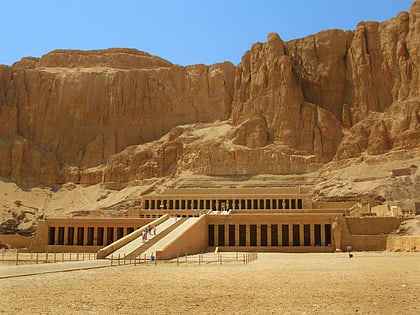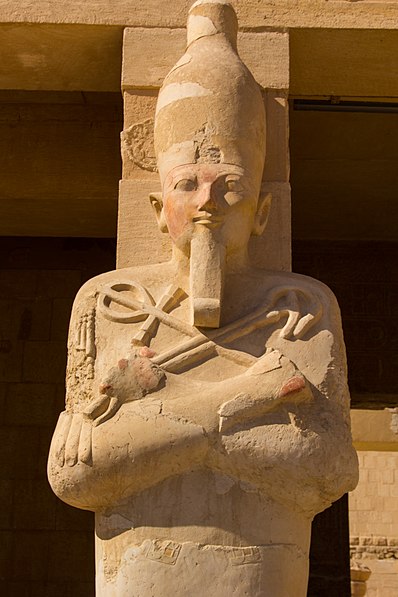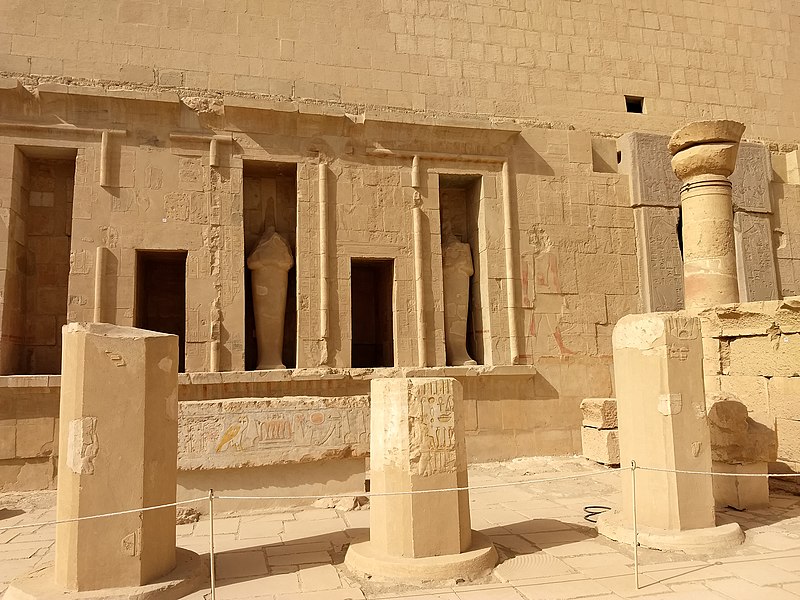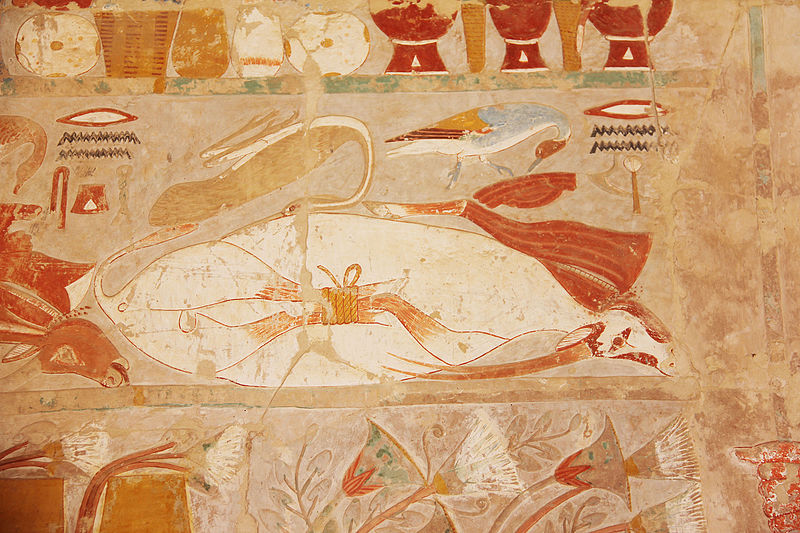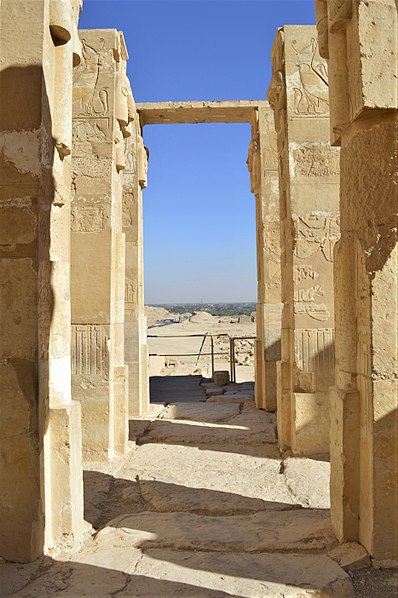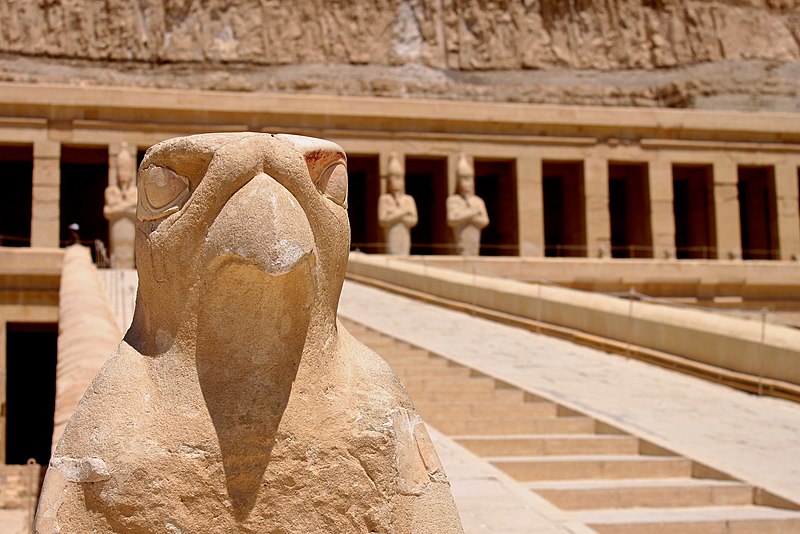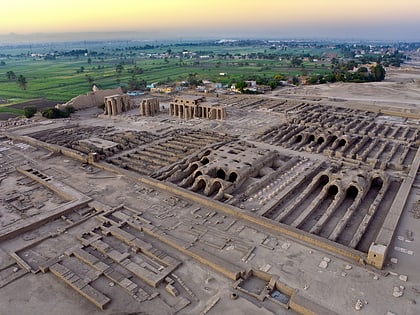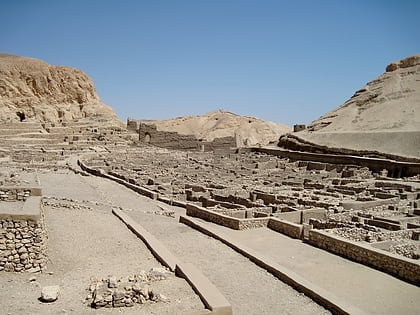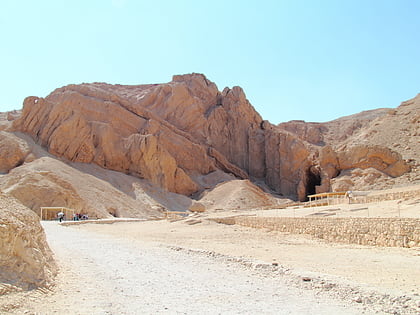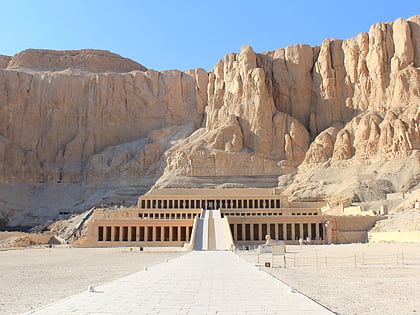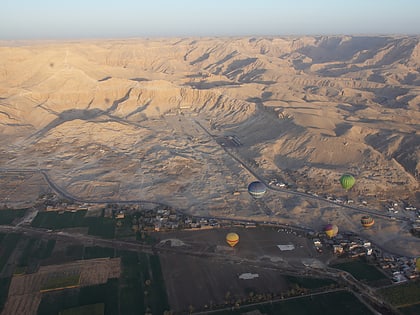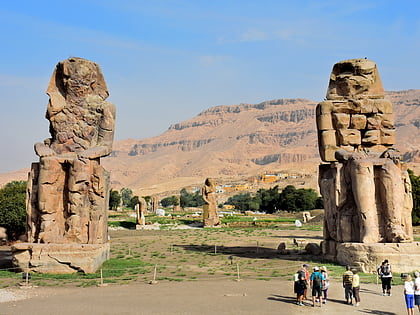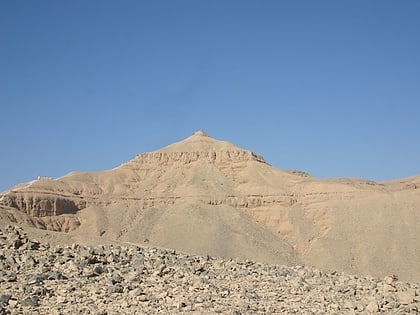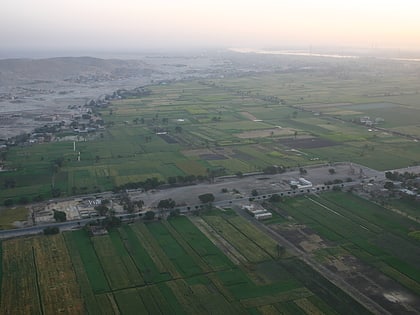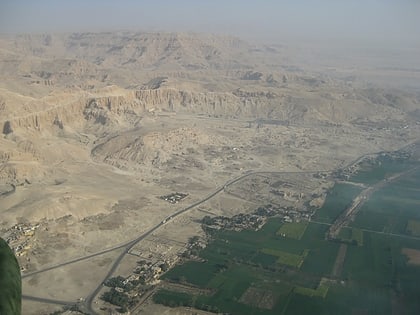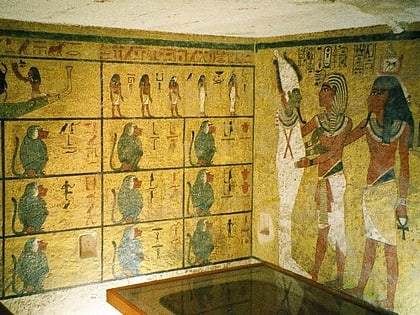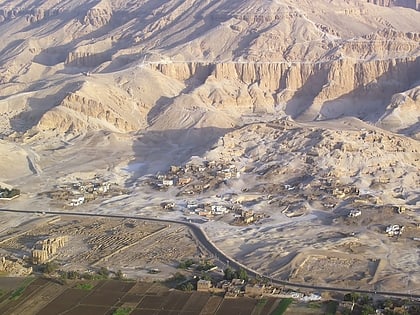Mortuary Temple of Hatshepsut, Luxor
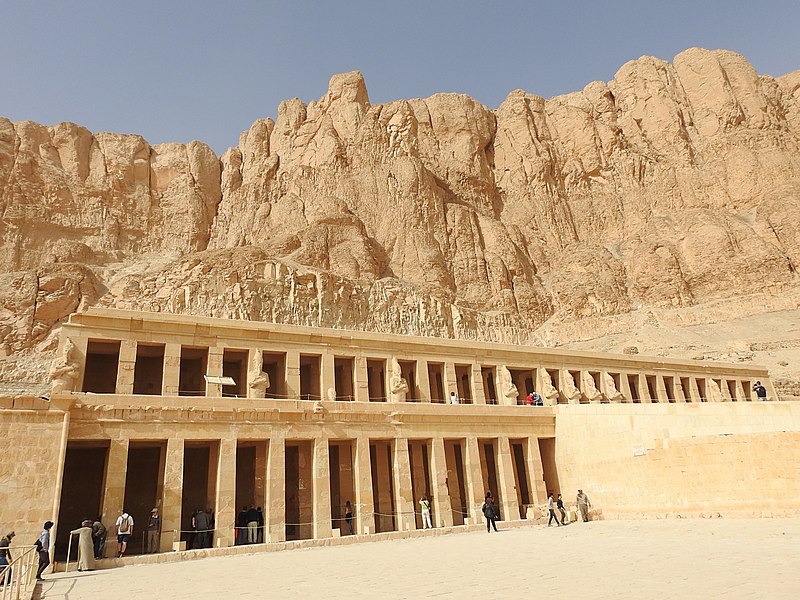
Facts and practical information
Nestled against the backdrop of the Theban hills on the west bank of the Nile, the Mortuary Temple of Hatshepsut in Luxor, Egypt, stands as an architectural marvel of the ancient world. Built in the 15th century BCE, this necropolis is dedicated to one of the most extraordinary pharaohs in Egyptian history, Queen Hatshepsut, and it is a testament to her legacy.
The temple, designed by the royal architect Senenmut, is a striking example of ancient Egyptian architecture, harmoniously blending with its natural surroundings. The complex is structured in a series of terraces that ascend the cliffs, connected by long ramps that were once graced by lush gardens. These terraces culminate in the sanctuary, which is carved directly into the limestone cliff face.
The Mortuary Temple of Hatshepsut is unique not only in its design but also in its purpose. It served as both a testament to Hatshepsut's reign and as a mortuary temple for her posthumous worship. Statues of the queen, depicted with the traditional false beard of pharaohs, stand tall within the complex, showcasing her desire to be remembered as a powerful and legitimate ruler.
Visitors to the site can explore its many chapels and shrines, each richly adorned with reliefs and inscriptions that provide insight into the religious and cultural practices of the time. Among the most significant are the Chapel of Anubis, the god of embalming and the dead, and the Punt Colonnade, which illustrates the famous trading expedition to the Land of Punt, believed to be one of the crowning achievements of Hatshepsut's reign.
The Mortuary Temple of Hatshepsut is a key component of the Deir el-Bahri complex, which is part of the larger Theban Necropolis, a UNESCO World Heritage Site. This site, along with the Valley of the Kings and the Valley of the Queens, forms one of the most important archaeological and tourist areas in Egypt.
Open to the public, the temple allows visitors to step back in time and witness the grandeur of New Kingdom Egypt. It is not only a place for those interested in ancient history and archaeology but also for travelers seeking to experience the awe-inspiring beauty of one of the world's earliest and most advanced civilizations.
Mortuary Temple of Hatshepsut – popular in the area (distance from the attraction)
Nearby attractions include: Ramesseum, Deir el-Medina, Valley of the Queens, Deir el-Bahari.
Frequently Asked Questions (FAQ)
When is Mortuary Temple of Hatshepsut open?
- Monday 6 am - 5 pm
- Tuesday 6 am - 5 pm
- Wednesday 6 am - 5 pm
- Thursday 6 am - 5 pm
- Friday 6 am - 5 pm
- Saturday 6 am - 5 pm
- Sunday 6 am - 5 pm
